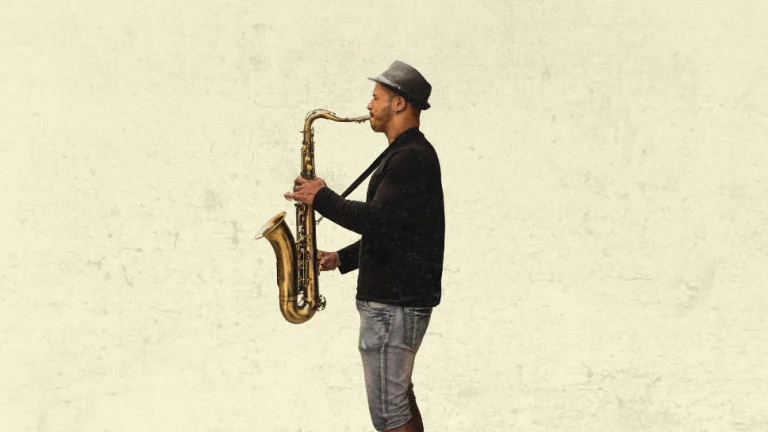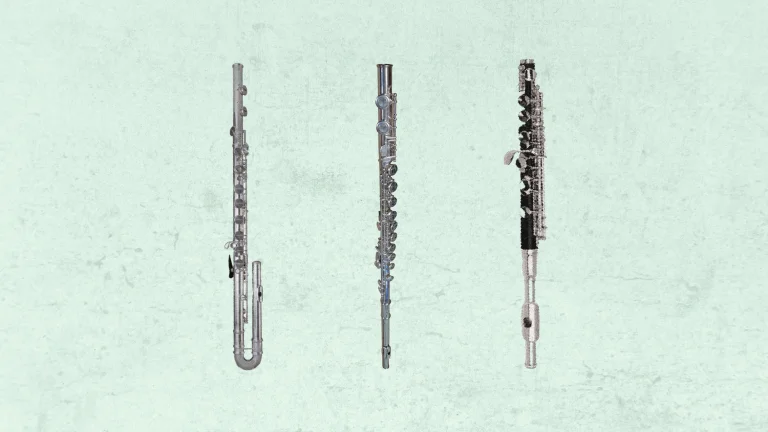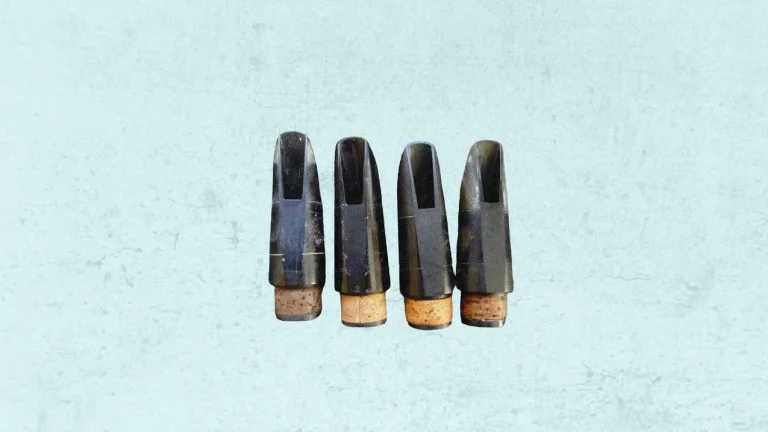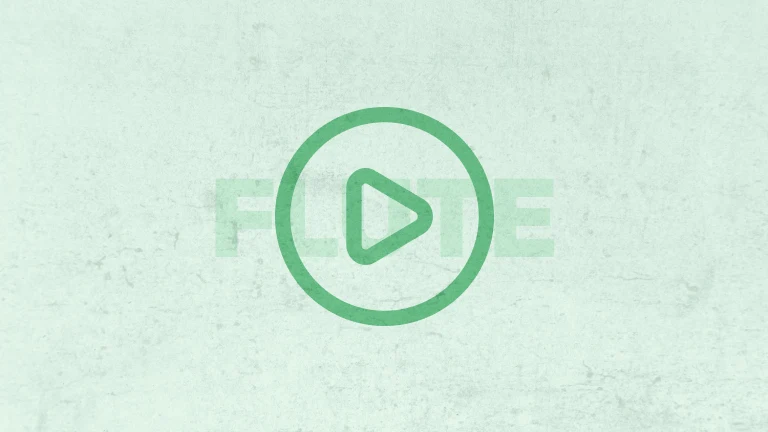In this guide, I will explain how to record a saxophone correctly whether it’s your first time or not.
There are several steps to follow that will guarantee you to get good results especially if you record at home.
Without further ado, let’s dive in and cover everything needed to record saxophones, whether it’s recording gear, room, or microphone positioning.
1. Choose Recording Equipment
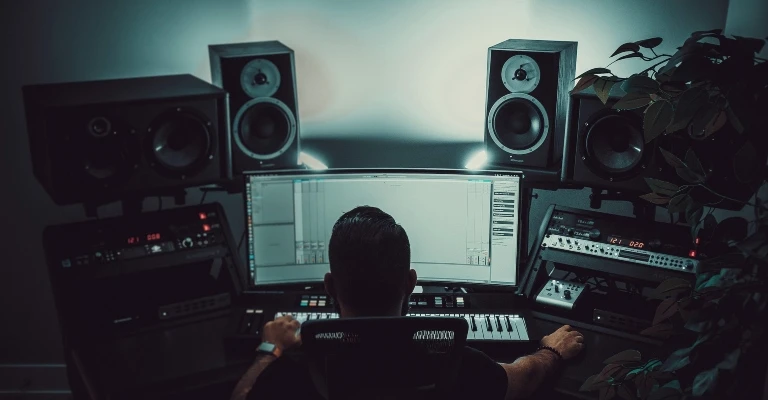
First of all, despite what type of saxophone you want to record, you need to have good-quality recording equipment.
To record a sax or any other instrument, most importantly at home, you need several recording equipment:
- Laptop or PC – Any modern laptop or PC will work for a recording environment but it’s recommended to have a computer with a multi-core processor and 8GB of RAM. You can use a Mac or Windows computer because it doesn’t matter.
- Audio Interface – To record an instrument you need to have an audio interface. It’s a device that you connect to a computer via USB and record sound from a mic or instrument input.
- Studio Monitors – You need to have good speakers to clearly understand and hear exactly what sound you get after recording. A pair of studio monitors will help you to achieve that.
- Headphones – If you don’t use studio monitors, then you need to have good studio headphones. But having both is better to check your tracks in different speakers.
- DAW – Digital Audio Workstation is a software that lets you record sound and create tracks. You can record, mix, and master songs with a DAW.
- Plugins – Although it’s not mandatory for recording, it’s always good to own several VST plugins for your DAW. Perhaps you need to add some effect to your sound like reverb or delay. That can be done by specific VST plugins.
In a nutshell, you don’t need more gear to record saxophones except one – a microphone.
2. Pick A Good Recording Microphone
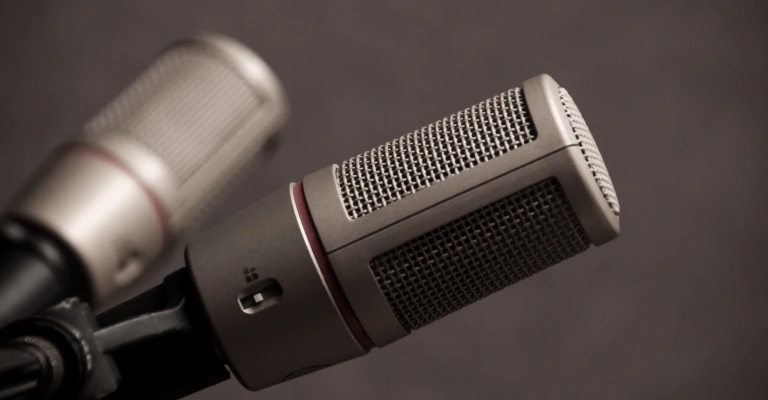
A microphone is the most important recording gear to record not only a sax but any instrument.
If a microphone doesn’t sound good or is not great for recording, then the result won’t be that good.
Many different types of mics work great in a recording environment and they offer various features and capture sound differently.
I recommend using a dynamic mic, especially for beginners but sometimes condenser mics work better. It all depends on your preferences and what kind of sound you want to capture.
Additionally, a very important thing when recording a saxophone is the correct positioning of a mic which I will explain later.
If you don’t have a mic yet or want to try a better one, then check my post about the best saxophone mics.
3. Recording Room
Now before I explain the mic positioning and recording process, I have to tell you about the room you are recording your saxophone in.
Like a microphone, the room is a very important thing when it comes to recording a musical instrument or vocals.
This room needs to be treated acoustically and there are special things called acoustic panels.
Different types of acoustic panels exist such as diffusers and sound-absorbing panels that do slightly different things.
But the main purpose of them is to avoid bouncing sound waves from walls and other surfaces to create a safe zone to record instruments.
If your room is not optimized for recording, no matter how good saxophone you use, it won’t sound as good as you wanted.
This is not a post about acoustic panels but you can find lots of information on the internet and try to make your room better for recording sessions.
4. Mic Position
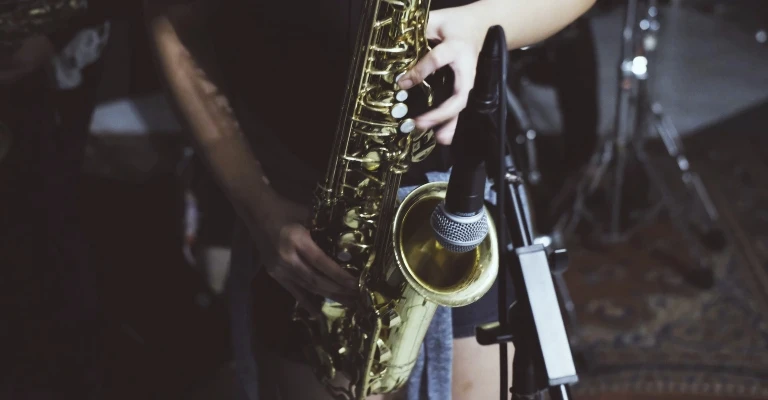
OK, now it’s time to talk about the saxophone recording process and more importantly about microphone positioning.
But first, you need to get a standard microphone stand to have your mic fixed in the desired position. You can get a good mic stand at an affordable price in any music store.
When you record saxophone it’s recommended to do it while sitting rather than standing because you will be more relaxed. So, have it in mind.
To get a good and desired sound, first, you need to test different mic positions, and here is how you do it:
- Put the microphone about seven or eight inches apart from the saxophone bell, and record a demo track.
- Then put it a little bit farther and record again.
- After that put it closer and record another demo track.
Do this in several different positions and then carefully listen to all the tracks to understand how they sound and what is the best position.
You will find out what impact the slightest change of mic position has on the saxophone sound.
This is the most important step because the sound of the final recording depends on it so take your time and find the best spot for your microphone.
In general, I like to record the saxophone when the mic is slightly far away because this way I capture the room sound too.
But for various situations, especially if you want to get a focused and direct sound, then you need to have a mic closer to the bell of your saxophone.
5. Record Saxophone With Two Mics (Optional)
Although it’s not mandatory, you can use two microphones to record a saxophone. This will allow you to have richer and more diverse sounds.
There are different ways to use two microphones for saxophone recording:
- Place two same microphone types in the same position
- Place one closer and the other one far away
- Use different types in the same position
- Record with different types of microphones in different positions
Either way, you will get a much different sound than recording with only one microphone.
If you ask me, I prefer using one dynamic and one condenser microphone to record my saxophone.
In general, a dynamic mic is my close microphone and I put a condenser further to capture the room sound but it might be different depending on the situation.
Conclusion
This is my small guide to those who want to know how to record a saxophone. It’s not that complicated – you just need the required gear but the most important aspect is the microphone, room, and most importantly the mic positioning. Just get a decent microphone and try to record demo tracks with microphones in different positions and you will learn what works the best for you.

